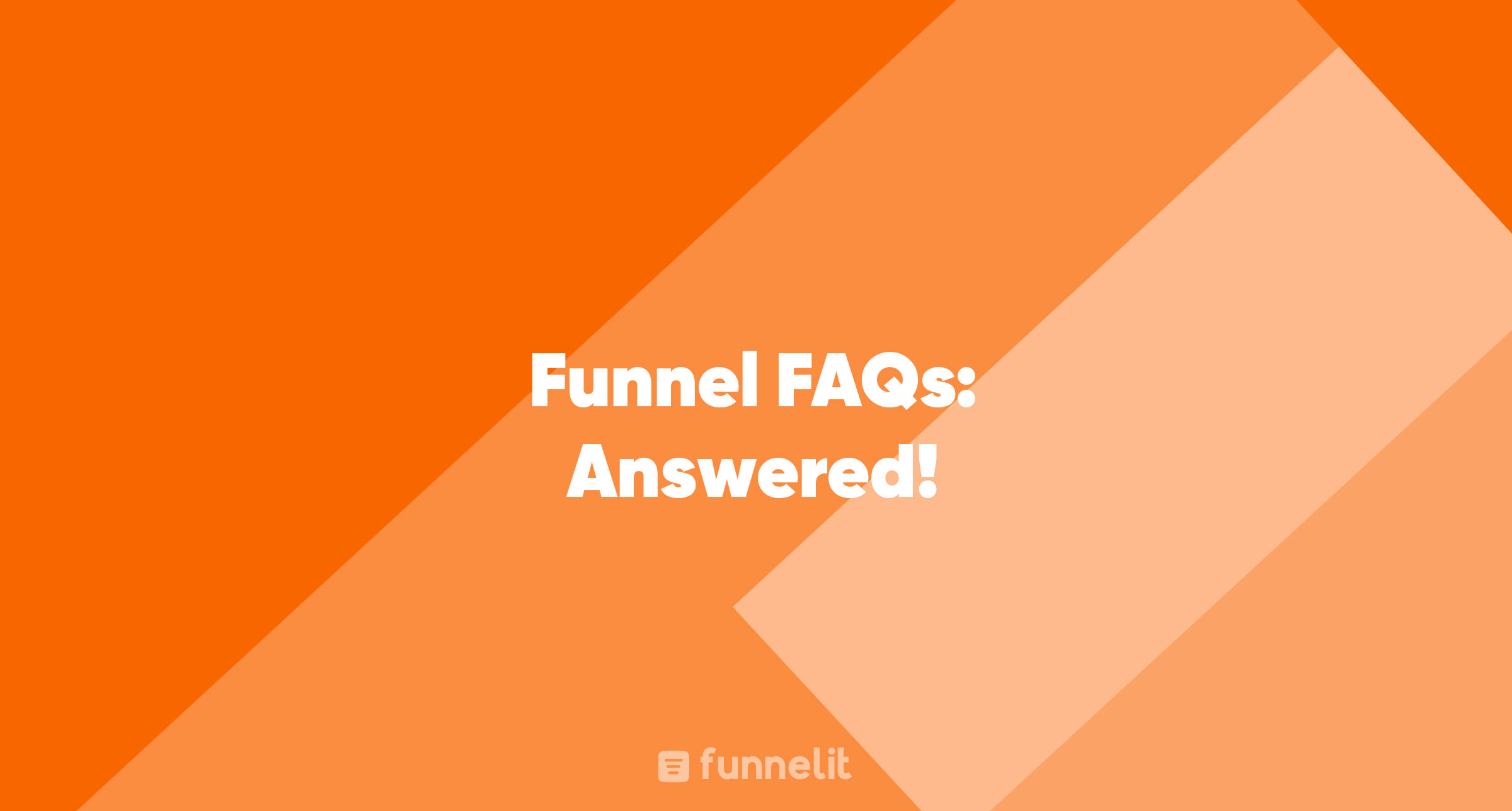Funnel FAQs: Answered!
Sales and marketing funnels are crucial concepts in the business world, guiding companies in converting prospects into loyal customers. However, many people still have questions about what a funnel is and how it works. In this article, we’ll address some of the most frequently asked questions about funnels, providing clear and concise answers.
1. What is a Funnel?
A funnel, in marketing and sales context, is a model that represents the journey of a potential customer from the first interaction with a brand to the point of conversion, typically a purchase. The funnel is wider at the top, representing a large number of prospects, and narrows down, representing the diminishing number of prospects who move to the next stages.
2. Why is it Called a Funnel?
It’s called a funnel because it resembles a real-world funnel in shape. At the top, many potential customers become aware of a product or service, but as they progress through various stages of the buyer's journey, like consideration and decision, the number of prospects decreases, narrowing down to the ones who actually make a purchase.
3. What are the Stages of a Funnel?
While funnels can be more detailed depending on the business model, a basic funnel has the following stages:
- Awareness: Prospects learn about the brand or product.
- Interest: Prospects show interest in the product or service.
- Consideration: Prospects consider whether to make a purchase.
- Intent: Prospects show a clear intention to buy.
- Evaluation: Prospects evaluate the product or service.
- Purchase: Prospects convert and make a purchase.
4. How Can I Optimize My Funnel?
Optimizing a funnel involves various strategies aimed at moving prospects smoothly through each stage, ultimately leading to higher conversion rates. Here are a few steps to optimize your funnel:
- Understand Your Audience: Know their needs, preferences, and pain points.
- Create High-Quality Content: Develop content that addresses your audience’s needs and interests.
- Leverage SEO: Optimize your content for search engines to increase visibility.
- Use Targeted Advertising: Employ ads that target your ideal customers.
- Improve User Experience: Ensure your website is user-friendly and easy to navigate.
- Leverage Analytics: Use data to identify areas for improvement and optimize accordingly.
5. Why is Funnel Analysis Important?
Funnel analysis is crucial as it helps businesses understand how prospects are moving through the funnel, where they are dropping off, and why. This information is vital for identifying areas for improvement, optimizing the funnel, and increasing conversion rates.
6. Can Funnels be Used in Any Business?
Yes, funnels can be adapted and used in virtually any business or industry. Whether it’s a B2B or B2C business, a service-based or product-based company, funnels provide a structured model to understand and optimize the customer journey.
7. How Do I Create a Funnel?
Creating a funnel involves the following steps:
- Define Your Goal: Know what you want to achieve, e.g., sales, sign-ups, etc.
- Identify Your Audience: Understand who your potential customers are.
- Map Out the Journey: Outline the steps prospects take from awareness to conversion.
- Create Relevant Content: Develop content for each stage of the funnel.
- Implement Tracking: Use analytics tools to track prospects’ movements through the funnel.
- Analyze and Optimize: Regularly review the data and optimize the funnel based on insights.
8. What is a Conversion Rate in a Funnel?
A conversion rate in a funnel is the percentage of prospects who move from one stage of the funnel to the next. It’s crucial for measuring the effectiveness of the funnel and identifying areas that need improvement.
9. How Can I Increase My Conversion Rate?
Increasing conversion rate can be achieved by:
- Optimizing Landing Pages: Ensure they are clear, concise, and compelling.
- Using Clear Call-to-Actions: Guide users on what action to take next.
- Building Trust: Use testimonials, reviews, and trust badges.
- Offering Incentives: Provide discounts, free trials, etc., to entice prospects.
- A/B Testing: Regularly test different elements to see what works best.
Conclusion
Understanding and optimizing your funnel is paramount to the success of your business. It provides a structured approach to converting prospects into customers and helps in identifying areas for improvement. Whether you are new to the concept of funnels or looking to optimize your existing one, we hope this article has answered some of your pressing questions and provided valuable insights into the world of funnels.
Remember, creating a successful funnel is not a one-time task but an ongoing process of analysis, optimization, and refinement. Keep your audience at the center, leverage data, and continually optimize your strategies to ensure your funnel is always performing at its best, driving conversions and contributing to your business’s growth.
